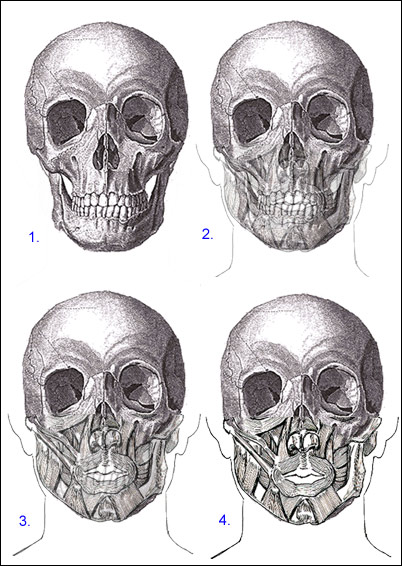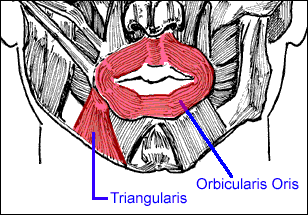|
Visualizing the facial muscles and the "floating" orbicularis oris |
In this illustration you can see the muscles of the lower half of the face applied over the bone in varying degrees of transparency. The important thing to remember is this: all the muscles you see* insert into the orbicularis oris - the circular shaped muscle you see that hovers around the mouth just under the lips. (*Except for the great jaw muscles - the masseter and the temporalis - who's function it is to clench the jaws together.)

In numbered sequence, the facial muscles
arising from their bony origins
The orbicularis oris is free floating (as are the majority of facial muscles) - it can dart in and glide in any direction. It's movement is directly influenced by the tug and pull of the muscles of facial expression much in the same way a circle of fireman gripping a "fire ring" can move waiting to catch a jumper. Or similar to the way participants can move the "eye" of a Ouiji board. (That example gives me the shivers.)

The orbicularis oris in red
Being a very malleable muscle itself, the orbicularis oris can bunch up, purse itself, stretch for miles, (well not literally miles), smile, grizzle up - anything the lips can do the o. oris can do too: it's the muscle beneath the lips that makes the lips do what they do. They hold the puppet strings.
(Side note: on top of the muscle layer you have two more layers: fat and skin completing the layers of "soft tissue" that collectively cover person's face - in fact are the face. )
Kasbohm & Company's
YouCanDraw.com
© Copyright, All rights reserved 1997
e-mail: jeffkaz@YouCanDraw